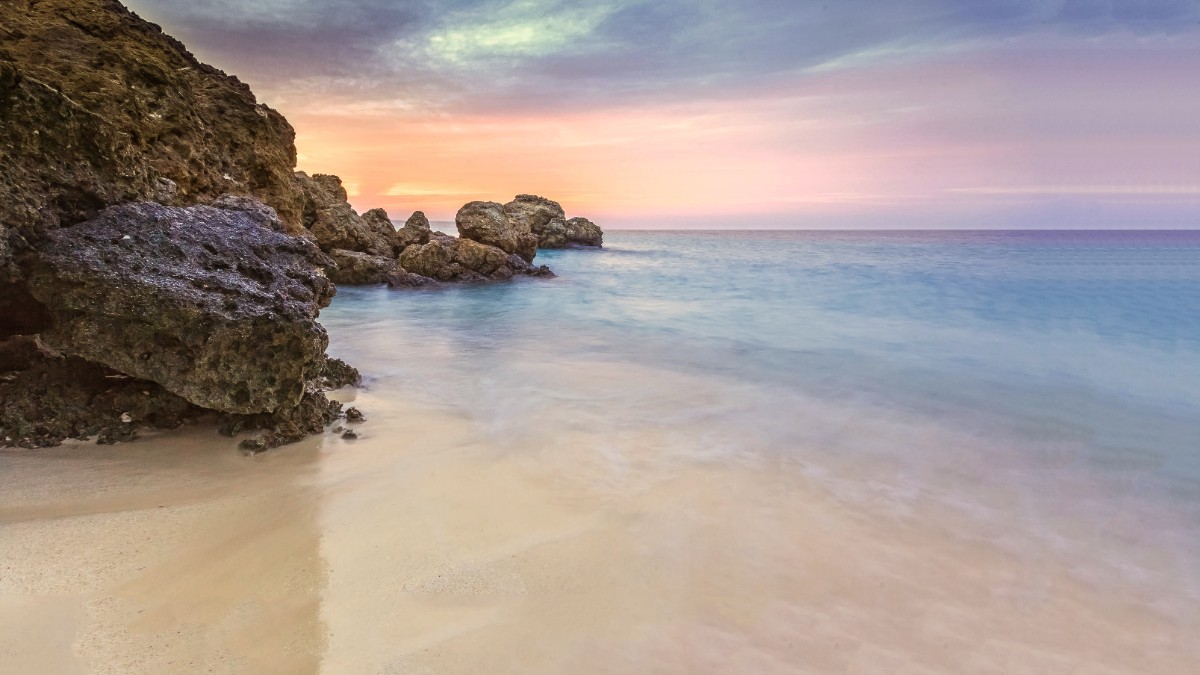The Farasan Islands, an exquisite archipelago nestled in the Red Sea, has long been recognized as one of the world’s hidden paradises. Located off the southwestern coast of Saudi Arabia, this group of islands is celebrated not only for its breathtaking natural beauty but also for its rich cultural heritage and burgeoning ecological significance. With an array of stunning beaches, unique marine life, and significant cultural vestiges, the Farasan Islands have increasingly captured global attention as a remarkable destination for both tourism and conservation efforts.
Recent updates relating to tourism, environmental initiatives, and infrastructural developments have further accentuated the importance of these islands. There is a growing interest among tourists and conservationists to explore these unspoiled treasures, where biodiversity thrives alongside historical landmarks that echo with stories of the past. This article delves into the latest developments concerning the Farasan Islands, emphasizing their unique offerings and the ongoing efforts to preserve what makes them special.
Situated in the pristine waters of the Red Sea, the islands are becoming a focal point for regional development plans aiming to harmonize economic interests with sustainable practices. The importance of this region is underscored by its diverse ecosystems and the potential they hold for scientific study, ecological tourism, and cultural exploration. In this comprehensive discussion, we will explore each aspect of the Farasan Islands, providing insights into how these elements are being managed and promoted on an international stage.

Tourism Development
Recent Infrastructure Improvements
Over the past few years, there have been significant strides taken to enhance the accessibility and infrastructure of the Farasan Islands. Recognizing the islands’ potential as a key tourism destination, Saudi Arabia has initiated several projects aimed at improving amenities and transportation. The development of Ruangwd these infrastructural elements is crucial for accommodating the expected increase in visitor numbers while also ensuring a sustainable approach to tourism.
One of the most notable updates is the expansion of the small airport on Farasan Island, which now includes modern facilities to accommodate a greater number of flights. This improvement has made it increasingly convenient for local and international tourists to visit the islands. Additionally, new ferry services have been introduced, linking the archipelago more efficiently with the Saudi mainland, making it easier for tourists to plan their visits.
Moreover, significant investments have been made in developing eco-friendly accommodations that are in line with the natural beauty and ecological sensitivity of the islands. Several luxury resorts and lodges have been constructed using sustainable materials and practices, aimed at minimizing their environmental footprint. This approach not only attracts tourists who are conscious of their ecological impact but also preserves the islands’ pristine condition for future generations.
Furthermore, the enhancement of local infrastructure has included the development of accessible pathways, informational signs, and observation decks. These initiatives are designed to enrich the visitor experience by providing educational opportunities about the islands’ unique ecosystems and historical significance, encouraging a deeper appreciation for this hidden paradise.
Promotion of Cultural and Historical Tourism
In addition to natural beauty, the Farasan Islands hold significant cultural and historical importance. Efforts have been made to restore and promote historic sites, such as the Ottoman-era houses and ancient coral buildings, which offer visitors a glimpse into the rich heritage of the region. Local authorities have been instrumental in conducting archaeological research and restoration projects to preserve these cultural resources.
The islands are home to diverse Arabic tribes with unique traditions and customs, which are now being promoted as part of cultural tourism initiatives. Workshops and performances that highlight traditional music, dance, and handicrafts provide tourists with an immersive experience of the islands’ cultural identity. These activities not only educate visitors but also contribute to the local economy by promoting the craftsmanship and talents of Farasan’s residents.
Additionally, the annual Farasan Islands Heritage Festival has been gaining momentum, drawing more visitors each year. This festival celebrates the islands’ rich traditions with events such as traditional sailing races, culinary exhibitions showcasing local cuisine, and story-telling sessions that narrate the history and myths of the islands. Such initiatives are key to preserving and sharing the vibrant culture of Farasan with a broader audience, ensuring that its unique traditions continue to be appreciated by future generations.

Environmental Conservation Initiatives
Marine and Terrestrial Biodiversity
The Farasan Islands are recognized as a hotspot for biodiversity, hosting a wide array of marine life, including coral reefs, sea turtles, and various fish species. Efforts to protect these ecosystems have been enhanced by recent conservation initiatives. Researchers and environmental organizations have established several marine protected areas (MPAs) around the islands to safeguard the diverse habitats that are home to endangered species such as the Hawksbill and Green turtles.
In addition to marine life, the terrestrial landscape of the islands is remarkably diverse, featuring mangrove forests, salt flats, and desert landscapes. The conservation of these terrestrial habitats is equally crucial, as they provide essential resources for the local fauna and flora. Recent environmental campaigns have focused on replanting mangroves, known for their ability to protect coastlines from erosion and serve as nurseries for various marine organisms.
Moreover, scientific studies and research activities have been actively encouraged to better understand the unique ecology of the Farasan Islands. Collaboration between local governments, universities, and international conservation organizations has resulted in programs aimed at monitoring wildlife, studying ecological interactions, and assessing the impacts of climate change on these delicate ecosystems.
Sustainable Practices and Eco-Tourism
As tourism develops, implementing sustainable practices becomes essential to preserving the Farasan Islands’ natural beauty and ecological integrity. Recent initiatives have pushed the boundaries of eco-tourism, aiming to balance visitor enjoyment with the protection of natural resources.
Policies have been implemented to regulate the number of visitors to sensitive ecological areas, such as turtle nesting sites and critical coral reef zones, to prevent disturbances and degradation. Tourists are provided with guidelines on respectful wildlife observation and the importance of leaving no trace during their visits. These educational efforts are crucial in maintaining the islands’ environmental quality while allowing visitors to enjoy their stunning landscapes responsibly.
Several eco-tourism operators have emerged, offering guided tours of the islands’ natural attractions, accompanied by expert guides knowledgeable about the local ecology and wildlife. These tours often include snorkeling, bird-watching, and trekking, all conducted with an emphasis on sustainable interaction and conservation-led education. By promoting eco-tourism, the Farasan Islands aim to attract a niche market of travelers who prioritize environmental responsibility and contribute positively to conservation efforts.
Community Involvement in Conservation
Community involvement is recognized as a cornerstone of sustainable conservation efforts on the Farasan Islands. Recent programs have been implemented to engage local communities in the protection and preservation of their environment. Initiatives aimed at raising environmental awareness and promoting sustainable practices within local populations have proven to be successful in achieving long-term conservation goals.
Local residents, who have historically depended on fishing and other natural resources, have been provided with training and opportunities to participate in conservation activities. By fostering a community-oriented approach, these programs ensure that conservation measures are effectively implemented, with locals becoming stewards of their environment.
Moreover, partnerships between local government, non-governmental organizations, and international agencies have played a pivotal role in implementing conservation projects. These collaborations support capacity-building initiatives, enabling local communities to adapt alternative livelihoods such as eco-tourism, which provide economic benefits while reducing the pressure on natural resources.
Strategic Importance and Future Prospects
Geopolitical Significance
The strategic location of the Farasan Islands in the Red Sea has historically endowed them with geopolitical significance. In recent times, the islands’ importance has grown due to regional developments in the transportation and energy sectors. The islands are situated along key maritime routes linking Europe, Asia, and Africa, positioning them as a crucial node for trade and commerce.
Recent geopolitical strategies have focused on harnessing the islands’ strategic position to boost regional economic interests. Saudi Arabia has emphasized the development of its maritime infrastructure, aiming to promote the Red Sea as a central hub for global shipping. The islands’ ports and facilities are being upgraded to support increased maritime traffic, positioning them as a vital point for logistical operations.
Furthermore, the islands play a role in regional security considerations, with growing collaborations established to ensure the stability of the Red Sea region amid global challenges. The ongoing focus on security and economic cooperation further highlights the Farasan Islands’ increasing importance on the international stage.

Scientific Research and Knowledge Expansion
The unique ecosystems of the Farasan Islands provide immense potential for scientific research and discovery. Recent initiatives have promoted interdisciplinary research collaborations focusing on marine biology, geology, climate change, and archaeology. These efforts aim to expand scientific knowledge while fostering innovation in sustainable management practices.
Universities and research institutions from around the world have been attracted to the Farasan Islands, pursuing projects that investigate critical ecological dynamics, such as coral resilience to climate change and the natural history of the region’s geological formations. These studies contribute to global scientific understanding while providing valuable insights that inform local conservation strategies.
Additionally, the islands’ rich archaeological sites offer opportunities for historical research and excavations. Recent findings have shed light on ancient trade routes, settlement patterns, and cultural exchanges that occurred in the region, providing a clearer picture of the islands’ historical significance.
Opportunities for Sustainable Economic Growth
The Farasan Islands are set to become a model for sustainable economic growth, balancing tourism development with ecological preservation. By capitalizing on their natural and cultural resources, the islands have the potential to attract investment and foster economic diversification.
Recent economic policies have emphasized the promotion of green tourism, heritage conservation, and renewable energy projects. Initiatives such as solar energy installations have been implemented to reduce dependence on fossil fuels, demonstrating the islands’ commitment to sustainable development. Moreover, the focus on eco-tourism and cultural heritage preservation has generated employment opportunities for local communities, contributing to social and economic well-being.
As the global demand for sustainable travel experiences grows, the Farasan Islands are poised to capture a niche market, drawing travelers who seek unique destinations that prioritize environmental responsibility. This positioning strengthens the islands’ economic prospects while providing avenues for long-term sustainable growth.
Conclusion
The Farasan Islands, a hidden paradise in the Red Sea, are undergoing a transformative phase, marked by strategic developments, conservation initiatives, and emerging tourism opportunities. As these islands gain recognition for their stunning landscapes and rich cultural heritage, efforts continue to ensure that their beauty and ecological integrity remain preserved for future generations.
The balance between development and conservation is pivotal as these islands embark on a journey towards sustainable prosperity. With concerted efforts from local authorities, communities, and international partners, the Farasan Islands are not only fostering an enhanced tourism experience but are also contributing significantly to ecological awareness and scientific research.
Looking ahead, the future outlook for the Farasan Islands appears promising. As they continue to attract global attention, their potential to serve as a role model for sustainable tourism and conservation is becoming increasingly evident. The sustainable practices being implemented today will play a critical role in shaping their legacy for years to come, ensuring that they remain a cherished destination and ecological sanctuary for all who visit. If you like reading this article then please consider visiting budsisback to find more article like this.

